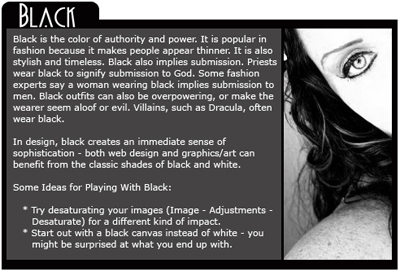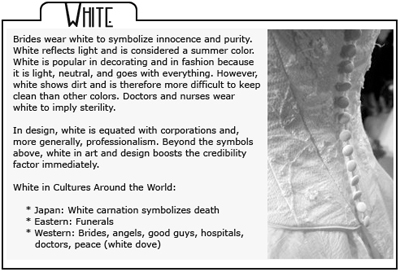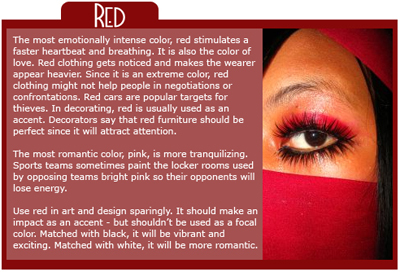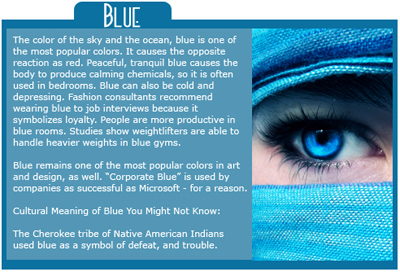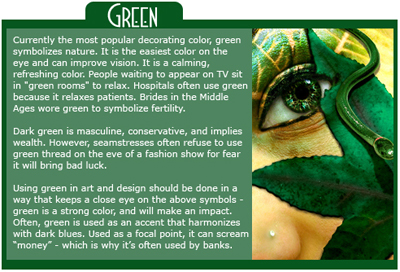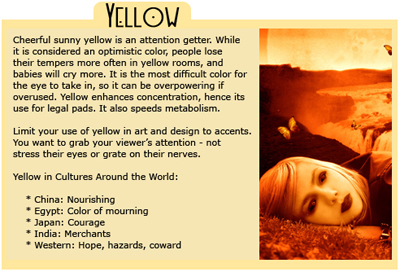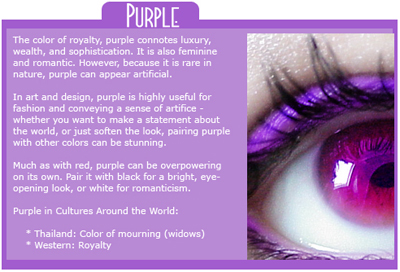If you're going to be a professional in any of the creative/artistic fields, you have to understand color. We've been dealing a bit with Color Theory on our site, but now we're going to dive into something equally important - Color Psychology.
Colors affect our moods. Depending on where in the world we live, we bring with us perceptions of color based on our culture. Even within a single country alone, the "meaning" of colors have changed over time. Today, though, psychiatrists are able to pinpoint a few universal truths about color and its effect on our "psyche" (conventional psychology completely dismisses the idea that color can affect our moods).
Why is this so vitally important? Simple - if you're creating a website that should bring ideas of nature, and all things natural you're going to stay away from purple. Because purple appears so little in the natural world, it is often seen as "artificial". However, if your site is about furnishings and opulent decoration, purple accents would be perfect - imparting ideas of royalty, luxury, wealth, and sophistication.
So you get the idea. Let's get cooking.
Colors in Advertising
I've already mentioned the idea that colors can - and should - affect website layouts. There are actually many simple rules in choosing the right color combinations, and most of them relate to how the color affects the conscious mind of individuals.
For instance, if you are selling products on your website, you should understand the specific role of color psychology in online marketing. Red stimulates us into action, represents aggressiveness, excitement, and paired up with gray, it represents impulsiveness. Blue represents sensitivity in feeling, and loyalty. In an online business, shades of red, blue, and brown have been found to be the "safest". While white is always seen as "professional" when viewed on a business site, it is color that makes the first impression.
History of Color Psychology
Johann Wolfgang Goethe was one of the first people to connect color and psychology, with his book "Theory of Colours". In 1947, Max Luscher took Goethe's theories one step further and actually created a color test for the use of psychiatrists, psychologists, physicians, and others involved with the "conscious and unconscious characteristics and motivations of others". Despite the ease with which Luscher's test can be administered, it is a very "deep" psychological test that can reveal a multitude of things about one's personality.
Color Meanings
I had a lot of fun with this. You can actually print the following cards and save them for reference - I promise, not only will you "look" more professional with a set of these (might I suggest laminating them?) but you will be able to quickly and easily perform more professional work. Hey, we just love you guys, you think we would make something any less cool than this? :)
Color Psychology: The Cards
